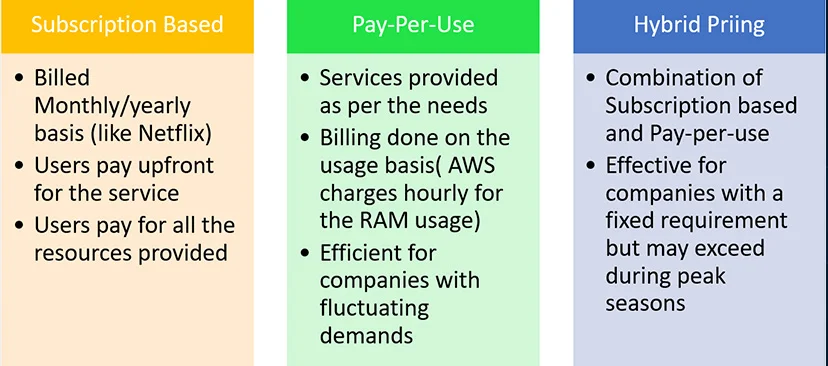Before we talk about whether the cloud services are getting costlier or not, let us look into what is a cloud service.
Cloud service is an on-demand computing service via the internet on a pay-as-you-go basis. The services may range from applications to their storage, as well as the processing power.
Most companies rent out the Applications (Outlook, Gmail) and Storage (Google Drive, OneDrive) instead of owning one from a vendor, known as the cloud service provider (Microsoft, Google, Amazon). Why? Because this helps companies avoid the cost of owning and maintaining their own IT infrastructure and pay for what they use and how much they use.
There are various benefits associated with a business to move to the cloud. These include Scalability, Security, Competitive Edge, Data Recovery, Quality Control, Mobility, Increased Collaboration, Sustainability. But, the principal motivation for a business to move to the cloud is the Cost Savings associated with it. Companies achieve this in several ways by planning the use of cloud resources like scaling infrastructure for fluctuating demands.
“So, Does the cloud promise you to save money?”

As said before, For significant industry players, the biggest reason to move to the cloud is reduced expenses. But is it guaranteed that the businesses will cut expenditures after moving to the cloud? How is the cost for the cloud calculated?
Before I answer this question, let me shed some light on the various pricing models for the cloud. The requirements for a cloud solution is different for different customers and also depends on the type of industry. Hence every cloud provider cannot stick to a single pricing model. These cloud providers list out the multiple pricing models, and the customers can choose from the ones which suit their business the most. Let’s look into some of these pricing models.
1. There are other models as well, but let’s come back to our main question. How is the cost for the cloud calculated?
Cost calculation is on the pricing model selected by the company from a service provider. The companies choose the pricing model, which they think will be the best suited for their business, and it is the most cost-effective while covering all the requirements. But sometimes a company may find it challenging to choose from the given menu. The model, which seems most feasible, might not end up being one. As a result, companies try to switch plans. The ones who do not change continue to incur higher costs. So, How can they optimize their cloud infrastructure?
Cloud cost monitoring is one of the best ways for cloud optimization (right resources at the right time). With proper cost monitoring tools, the tech team can make informed decisions on architectural changes and avoid accidental overspending. Apart from making cost-efficient systems, it may also allow the engineering teams to detect various attacks ( like denial of wallet attack).
For any business, it will be much better if they know beforehand what the cost is that they are about to incur for a particular service. Such knowledge beforehand lets them plan the future activities, the amount that they can invest somewhere else, or what actions they have to cut short to compensate for such a service (in case the budget exceeds). Now, if we recall the promise of saving money, it can be achieved ‘but’ only if proper cloud cost optimization gets your attention. Don’t forget; the cloud has many potentials. 😊
With Prismberry, we empower our clients to optimize their cloud applications and infrastructure resources, with consistent cost and resource monitoring tools, to make the most out of their cloud investment.
2. So, how are you planning to make your cloud investment lucrative?



